Portfolio: Photographs
- Boston Bargain
- Pollack
- Harmony Club
- Richard
- Old Menorah
- Ember
- Pews
- June Cohn
- Ronnie Leet
- Berger
- Temple Services
- Temple
Ten Jews Left
by Susan Todd-Raque
In Selma, Alabama, a town with a population of less than 20,000 people, there is one synagogue, Temple Mishkan Israel, with a congregation of only ten Jews.
These ten people are all that remains of what was once a thriving Jewish community. When they die, there will be no more. It is a tale of loss and identity taking place in every small Southern town in the last century and, most important, also of the Southern Jewish experience in those small towns as Temples close and the elderly die, leaving cemeteries as the sole markers of a formerly vibrant Jewish life.
Back in the 1830s, the Jews peddling their wares came north through the ports of New Orleans and Mobile to settle as merchants in Selma, already a fledgling economic center. As the Black Belt region, with its rich, dark fertile soil, prospered with the selling of King Cotton prior to the Civil War, so did the Jewish community in Selma with its development of the downtown commercial center. The Alabama and Mississippi Railroad construction connecting Meridian and Selma in 1854 enhanced the economic growth before and after the war. By the turn of the century, Selma was a thriving place, dominated by Jewish merchants such as Schuster Hardware, Adler’s Furniture, Meyers Shoes, Klotzman Furniture, and others.
As the Jewish population grew, religious services were held in various private homes until 1867, when it was decided to meet regularly at one home, that of Adolph Elkan. In 1870 the group formally gathered as Congregation Mishkan Israel, and though the congregation continued to hold services in semi-permanent places, it was not until 1899 when their Temple Miskhan Israel was built. Jews from the surrounding rural areas of Marion, Camden, and Uniontown traveled to Selma to worship alongside the Jews there, finding comfort in the new Temple.
During the 1930s, there were more than 100 families on the register of the Selma Reform Temple. Nearby, the Orthodox congregation, B’nai Abraham, supported its own small group of devout Jews. Many government public offices, including three mayors (Solomon Maas, Marcus Meyer, and Louis Benish), and civic organizations were thresholds in which both Jews and non-Jews worked for the good of the city. The local Council of Jewish Women provided free meals for the poor, regardless of race or religion, during the Great Depression. As European Jews fled rising Nazi power in the late 1930s, they came to Selma and were welcomed into the Jewish community.
The Jewish population of Selma began its steep decline in the 1970s as young people went away to college and later for the better opportunities in the larger Jewish communities in the South, such as in Charlotte, New Orleans, and Atlanta. Pursuing careers in the larger cities took precedence over returning to run the family businesses in Selma. Young women married men from other places. Some young people intermarried, and their interest in returning fully to the Jewish faith waned. When the rabbi died in the mid-1970s, no one replaced him; instead, the rabbinical school provided rabbis for special events and holidays. The closing of Craig Air Force Base in 1977, the opening of large discount big-box retailers nearby, and changing shopping patterns in the 1980s further damaged the local economy of small retailers, leaving them without business from the local people and forcing most of them to close.
Today, what is called downtown Selma is made of up deteriorating brick-and-mortar shells of what once was a busy, exciting city. The stores of the Jewish merchants on Alabama Avenue and Broad Street now stand empty and shuttered. For many of the buildings, store signs are barely noticeable relics of the past. Selma, like many small Southern towns, struggles to survive but is making efforts to engage in activities to restore and revive.
Nearby, the aging but still beautiful Temple Mishkan Israel stands, with its impressive central dome and square turrets, although it is rarely open. Paint peels off the walls, which are also stained from the leaky roof. The deep scarlet carpeting is worn, with threadbare areas from the beaten paths of previous congregations and the many services once held there. The magnificent organ is silent most of the year. Any meetings held there are shortened by the chill and dampness in the winter and the relentless heat in the summer.
The remaining ten Jewish members are all over age sixty and can neither financially nor physically handle the demands of keeping the Temple open except for High Holy Days and other special events. In their search for ways to survive and save their cultural legacy, the members are considering several solutions, including transferring ownership of the Temple to the Goldring/Woldenberg Institute of Southern Jewish Life in Jackson, Mississippi, with the hope that the institute would succeed in establishing a museum or cultural center. But repairs are needed, and the sanctuary must be restored before this can happen.
The irony of this situation and the loss of their identity as small-town Southern Jews runs counter to the pop culture captivation with the Southern Jewish experience as depicted in popular books (Shalom Y’all) and films (Delta Jews).
A former member of the Temple, raised in Selma but now living in Atlanta, photographer Jerry Siegel travels back to Selma to photograph the few people maintaining the Jewish community, saying he sees his life disappearing. He remembers his childhood as a bubble of Nirvana, wrapped up and protected by his parents. When his father, Schuster Siegel, died in 2000 and later his Uncle Jerry, Siegel found his roots pulling him back to Selma to photograph first his parents’ home as they left it, then the places he knew as a child. Every time he returns, he sees anew, often finding what he has forgotten, taken for granted, or never noticed.
Through the lens of his camera, Siegel revisits the Selma of his youth and has begun to get in touch with his loss. Longing to gain an understanding of the Jewish community as it is today, he began photographing the remaining ten members in the Temple, at home, and in the community where they are all still active—and offering the images to them to use in proving the worthiness of saving the Temple.
The ten remaining Jews are Betty Rose and Richard Gibian; their daughter, Joanie Gibian Looney; Charles Pollack; June and Seymour Cohn; Hannah Berger; Ronnie Leet; and Connie and Ed Ember.
For years, the Gibians ran American Candy Company, a company founded by Bo’s family, before finally selling it. The Cohns are in their early nineties, and leaving Selma is not an option for them. Leet once ran the family businesses of J. Leet and Son, including Leet Auto Parts, and splits his spiritual life between the Temple and his wife’s Episcopal church. Jerry’s brother, Mike Siegel, is working from his home base in New Orleans with Ronnie Leet and his friend Rusty Palmer to spearhead fundraising campaigns.
In 1997 for the 100th anniversary of the Reform Temple, and in an attempt to draw attention to the community’s struggles, Al Benn, a former member, wrote an article for the Montgomery Advertiser. For a short time, hundreds of Jews came from all over the South to celebrate the High Holy Days. Many of them came because of their family roots in Selma. There was a flurry of media attention from newspapers around the country. An endowment fund was started. But the attention has faded, and the fund is being depleted by the demands of maintaining the building.
Now, as the few remaining Jews gather, encircled by those who once lived in Selma, the link between them is the desire to save the Temple, now a symbol of their way of life, family, and traditions. As Siegel has admitted, it is what grounds him. He recognizes that for him being Jewish is about not just religion but his ethnicity and life. Entering the Temple renders him quiet as he remembers sitting in the smoothly carved wooden pews as a child, where each family once sat for the services.
This is a tale of a small Jewish community in Selma whose formerly vibrant Jewish presence is fading, and it is repeated time and time again across the South in small towns. With globalization, big-box retailing, and corporate business outsourcing practices, small communities are struggling to survive. What once held a small town together is gone. This is the story of one community of Jews left in Selma as they grapple with the loss of their identity.


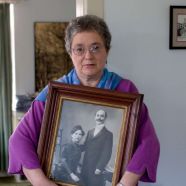





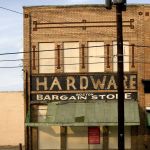



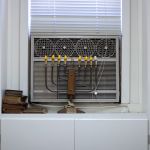




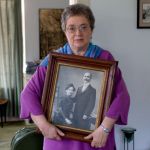
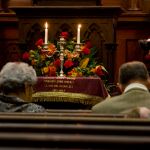
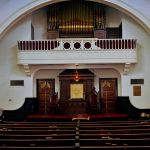
Well written however a sad story. This story line , unfortunately is often repeated . The younger generation often times moving away for promises of better opportunities. However I feel that one day , that decision will create a deep regret when they see that pursuit of money and wealth did not give them what they ultimately desired – a sense of purpose and belonging .
Yes, it is a well written article and sad. I’m sure throughout the south there are many stories like this….
I did a residency in south ga, staying with a local school administrator who i came to realize was both racist & anti-semite… her neighbor,a merchant much like the jews in this story, enrolled in my night drawing class and i found that the administrator had never been to her home though they were close neighbors. the high school had separate black/white proms… this was 1988 and all was normal except to a visiting yankee. the downtown was, as in this story, deserted or desparately hanging on… i wrote a couple songs while there about it…”I feel like the boarded up bank, over in downtown. just too far away from the highway skirtin the town.”
Jerry Siegel has a terrific sense of history and a sense of family and tradition, which he’s demonstrated here. So poignant, this story is a reminder of change and loss and the evolving South.
Jerry,
Thank you…
Laura Fine Fereres
Thanks for the lovely story and photos. It took me a long time to discover the rich tradition of Jews in the South. Just last year, my husband and I visited the charming town of Eufaula, Alabama, and by chance met Sara Hamm, the Reeves Peanut Company plant manager – and the town’s Jewish historian. Sara , a font of local knowledge, directed us to Jewish sites we should visit downtown, as well as to the Jewish cemetery. It was a terrific experience, and now I am thinking we might visit Selma as well. What a great education for a Brooklyn born native.
captivvating story, and photographs. I like how the writing grounds the specific cultural experience with the larger socioeconomic realities that gut small towns and contribute to the general deterioration which characterizes this time we inhabit. Siegel has captured the beauty of transcience and decay thoughtfully.
I am twelve years old, and am preparing to have my Bar Mitzvah next august. My great-great grandparents were members of the Mishkan Israel congregation, and so my Bar Mitzvah is going to be at the Mishkan Israel temple. My Bar Mitzvah project is to raise money to restore the temple, and this article was very informative to me. Thank you!
Yes this is a very sad and familiar story. Even for black citizens of Selma. Believe or not. I grew up in a very nice caring home with my mother and Grandmother. My grandfather Clarence Bishop worked for Bendersky’s, until he died in 1958.But he left us will cared for. We lived there over 25-30 until my grandma Rosie Bishop passed & then my Mom. Drugs took over the neighborhood and most of us had moved away now it’s been torn down. Pretty quick how your whole growing days can just disappear.
Selma has had a rich Jewish history. This was a well written story that leaves me saddened for our loss. The community has been blessed by the presence of these men and women who put much into the community and her people. I have fond memories of visiting and shopping in downtown Selma as a child. It brings to mind something that me grandfather would say of the young, “too soon we grow old, too late we grow smart”. I am joining Elijah in the campaign to see the temple restored. Bravo Elijah!
I, too, have become nostalgic for Selma.
We lived in several houses, in Selma, until my folks
bought a small farm up in Summerfield and then
commuted to Selma for school, driving a Model A
Ford. I would love to hear from anyone who reads this,
whether you knew me, or not.
I was graduated with the Class of 1949, from
Albert G. Parish High School.
I just googled Selma and see that Charles Pollack is still there. I remember the day, in the seventh grade , when Charles was introduced to the class and he gave a short version of his family’s escape from Hitler’s Germany.
MaryEsther Snead Parker Tampa, Florida